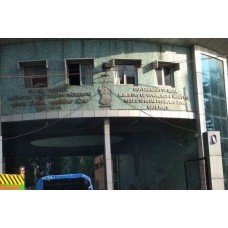Lockdown review regulates economy
Ministry of Home Affairs Extension of Lockdown for a further period of Two Weeks with effect from May 4, 2020 and allows commercial activities with all those measures of safety. After a comprehensive review, and in view of the Lockdown measures having led to significant gains in the COVID-19 situation in the country, Ministry of Home Affairs (MHA), Government of India (GoI) issued an Order under the Disaster Management Act, 2005, to further extend the Lockdown for a further period of 2 weeks with effect from May 4, 2020.
MHA also issued new guidelines to regulate different activities in this period, based on the risk profiling of the districts of the country into Red (hotspot), Green and Orange Zones. The guidelines have permitted considerable relaxations in the districts falling in the Green and Orange Zones.
The local authority shall ensure 100% coverage of Aarogya Setu app among the residents of the Containment Zone. Containment Zones would have intensified surveillance protocols, with contact tracing, house to house surveillance, home/ institutional quarantining of persons based on their risk assessment, and clinical management.
In the Red Zones, outside the Containment Zones, certain activities are prohibited in addition to those prohibited throughout the country. These are: plying of cycle rickshaws and auto rickshaws; running of taxis and cab aggregators; intra-district and inter-district plying of buses; and, barber shops, spas and saloons.
Certain other activities have been allowed in the Red Zones with restrictions. Movement of individuals and vehicles is allowed only for permitted activities, with a maximum of 2 persons (besides the driver) in four-wheeler vehicles, and with no pillion rider in the case of two-wheelers.
Industrial establishments in urban areas, viz., Special Economic Zones (SEZs), Export Oriented Units (EOUs), industrial estates and industrial townships with access control have been permitted. The other industrial activities permitted are manufacturing units of essential goods, including drugs, pharmaceuticals, medical devices, their raw material and intermediates; production units, which require continuous process, and their supply chain; manufacturing of IT hardware; jute industry with staggered shifts and social distancing; and, manufacturing units of packaging material.
Private offices can operate with upto 33% strength as per requirement, with the remaining persons working from home. All Government offices shall function with senior officers of the level of Deputy Secretary and above at full strength, and the remaining staff attending upto 33% as per requirement.
A large part of the financial sector remains open, which includes banks, Non-Banking Finance Companies (NBFCs), insurance and capital market activities, and credit co-operative societies. Operation of homes for children, senior citizens, destitutes, women and widows etc.; and operation of Anganwadis has also been permitted. Public utilities, e.g., utilities in power, water, sanitation, waste management, telecommunications and internet will remain open, and courier and postal services will be allowed to operate.
Most of the commercial and private establishments have been allowed in the Red Zones. These include print and electronic media, IT and IT enabled services, data and call centres, cold storage and warehousing services, private security and facility management services, and services provided by self-employed persons, except for barbers etc., as mentioned earlier.
In the Orange Zones, in addition to activities permitted in Red Zone, taxis and cab aggregators will be permitted with 1 driver and 2 passengers only. Inter-district movement of individuals and vehicles will be allowed for permitted activities only. Four wheeler vehicles will have maximum two passengers besides the driver and pillion riding will be allowed on two-wheelers.
In the Green Zones, all activities are permitted except the limited number of activities which are prohibited throughout the country, irrespective of the Zone. However buses can operate with upto 50% seating capacity and bus depots can operate with upto 50% capacity.
No separate/ fresh permissions will be required from authorities for activities already permitted to operate under the guidelines on Lockdown measures up to May 3, 2020. The Standard Operating Protocols (SOPs) issued by MHA will continue to operate such as transit arrangement for foreign national(s) in India; release of quarantine persons; movement of stranded labour within States/ UTs; sign-on and sign-off of Indian seafarers, movement of stranded migrant workers, pilgrims, tourists, students and other persons by road and rail.
State/ UT Governments are mandated to strictly enforce the lockdown guidelines and they shall not dilute these guidelines issued under the Disaster Management Act, 2005, in any manner.




